Sigma interview @ Photokina 2018: CEO Kazuto Yamaki gives us a peek inside the L-mount alliance
posted Tuesday, October 2, 2018 at 9:11 PM EDT
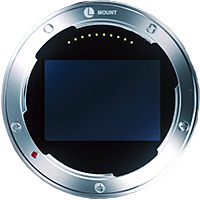
Sigma's CEO Kazuto Yamaki is always an interesting interview subject; as the head of a family-owned global company, I know that when I'm talking with him, I'm talking to the single person who makes decisions for the company; he's the ultimate authority for the company's direction, so can speak authoritatively about the company's direction. He's also remarkably straightforward in his communications. I never have a sense that he's hewing to carefully-constructed talking points; he's never careless in his comments, but there's never any sense of corporate positioning with him: What you see is pretty much what you get :-)
This time around, our schedules were such that we could spend only a little time together, but it was very interesting hearing his take on the new L-mount Alliance and Sigma's plans, both for L-mount lenses and for their own L-mount full-frame camera.
Without further ado, here's our conversation:
Dave Etchells/Imaging Resource: This was a very interesting show!
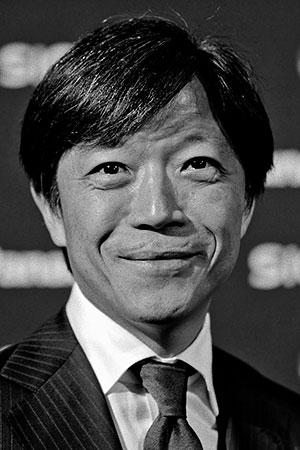
Chief Executive Officer
Sigma Corp.
Kazuto Yamaki/Sigma Corp.: Yes, Canon, Nikon, the three in the L-mount Alliance. I think this is the most interesting Photokina in at least 20 years.
DE: Yes, certainly the most eventful, but maybe the last one. With it going to May and every year, I think it will become tiny. Well, for the first thing, I was extremely interested at the L-mount press conference that you said you had been planning on introducing your own full-frame camera. That means you're working on cameras again?
KY: Yes, as you know, we have the SD Quattro camera, and it uses the conventional SA mount. It was the first camera where we got rid of the mirror, but the flange back was still long, because SA mount was made for SLRs. And we developed that camera six or seven years ago, when that project started. So it made every sense to use the existing mount, to support the existing SA-mount camera. But today, continuing to use the long flange-back mount doesn't make sense.
DE: Yeah, yeah.
KY: We were concerned about the future, so first of all we decided to make a full-frame format sensor. And then we decided to make a short flange-back mirrorless mount system. And at some point, we -- both Sigma and Panasonic -- realized that we were also both working on the full-frame mirrorless cameras, and Panasonic made a proposal to Sigma and Leica to form an alliance.
DE: Yeah, because you had a relationship with Panasonic already.
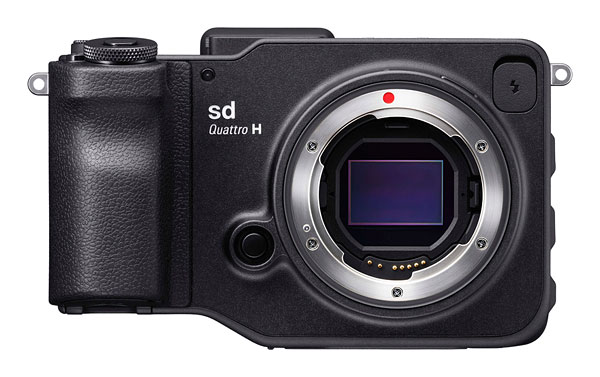
KY: We worked together on Micro Four Thirds products, because Sigma was one of the first members to join the Micro Four Thirds system, and also the Four Thirds system. When Olympus and Panasonic announced the Four Thirds system, Leica and Sigma were among the first to join the alliance.
DE: Yeah, and Panasonic has had a relationship with Leica for a long time. They carry Leica branding. I imagine that the lenses are actually designed still by Panasonic, but it's one of those things where if it's a high enough quality then they'll let you put their brand on it. That's very interesting, but you haven't announced anything officially about a full-frame camera?
KY: Actually, last night I announced our plan for the L-mount system. We didn't show any new specific product, but I announced six things. First, we will develop the full-frame mirrorless camera which features a Foveon full-frame sensor, and this camera will be available next year. The second one is that we've stopped developing new SA-mount cameras, so no new SA-mount cameras will be available. Number three is that we will continue the development and manufacturing of our series of SA-mount lenses, because there are still SA-mount camera users.
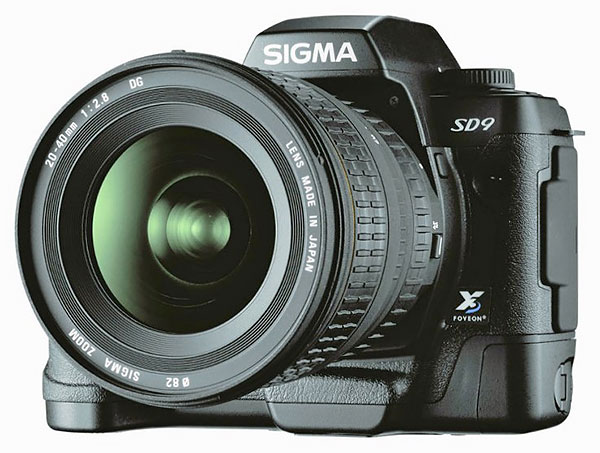
KY: Number four is that we'll make two lens-mount adapters. One is a Sigma SA to L-mount adapter, and the other one is a Canon EF to L-mount adapter. And these adapters will be available next year. [Ed. Note: It turned out we were caught completely flat-footed by this; while we normally get a heads-up from manufacturers that they at least have something coming we should be on the lookout for, we had no idea that Sigma had anything coming at Photokina, and I personally missed seeing the invite to their Tuesday evening event from Sigma Germany. So I was unaware of the announcement when I met with Yamaki-san first thing on Wednesday morning :-/ ]
DE: Ah - And you already have the MC-11 that adapts to E-mount...
KY: So by supplying these lens adapters, we'd like Sigma and Canon-mount users to try our L-mount body.
DE: Your coming L-mount cameras, yes. And the MC-11 works with any Canon lens pretty much, right? It's not just Sigma's Canon-mount lenses, it's Canon's also.
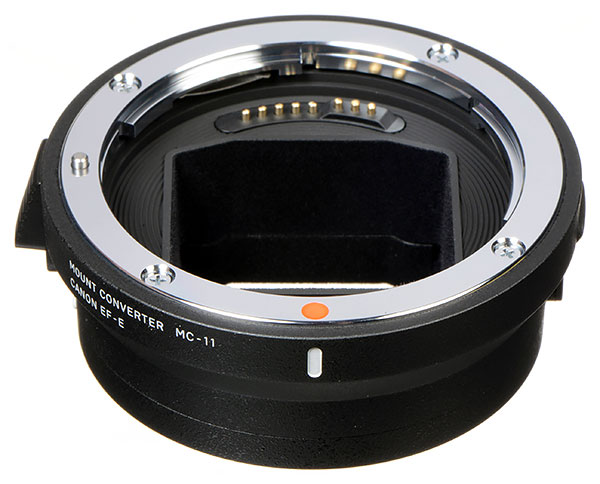
KY: We do not guarantee the compatibility.
DE: Yes; Canon's own lenses may very well work with it, but you can obviously only guarantee compatibility for the lenses Sigma makes. You mentioned earlier another key announcement last night?
KY: Yes, that was that starting from next year, we will develop native L-mount lenses.
DE: Ah, native L-mount. And that's native meaning, you will take existing lenses you produce and make them L-mount, or design new L-mount lenses, or...
KY: Both. So right now we have 14 lenses for Sony E-mount, including lenses modified from DSLR to Sony E-mount, meaning that we extended the rear part. And also we have lenses specifically designed for the Sony E-mount. We'll make the L-mount version of those lenses next year. And also, we will release some more lenses designed for the short flange. So that means from an early stage, users of this new L-mount system will have a wide variety of lenses available.
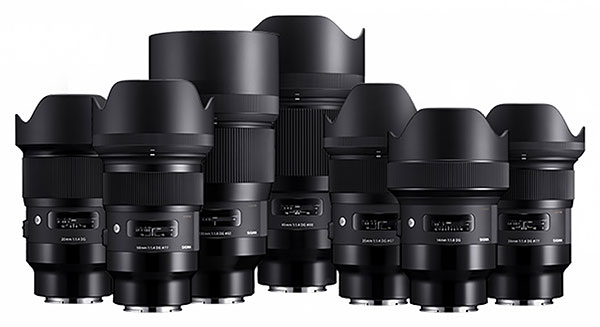
DE: A very complete lineup.
KY: Yes.
DE: So users will have very high quality lenses, yet that ones that don't cost ten thousand dollars apiece, which is Leica's part of the market.
KY: So this L-mount system is not exactly the same as the existing one. We updated it a little bit to work better with such lenses through lens adapters.
DE: Oh, so the L-mount is not exactly the SL-mount, there were some updates to it? Is it like the electrical interface was upgraded?
KY: It's SL-mount, the hardware is the same, but the firmware is upgraded.
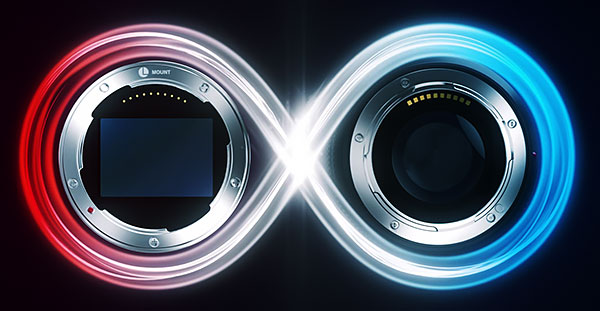
DE: And then the remaining point you mentioned was...
KY: TYhe last point is that we will provide a mount conversion service.
DE: Ah!
KY: For example, this new 14mm lens, it's designed for the Canon EF-mount and existing SLRs, but we will make a Sony-mount version. And if we make an L-mount version, we'll provide the mount conversion from, for example, Canon to L-mount.
DE: And that will eventually be also directly available in L-mount at some point?
KY: Yeah, yeah. These two things, the lens mount adapter and mount conversion service, are mainly for our SA-mount users. Since we will not make an SA-mount camera in the future, SA-mount users may be disappointed. But we will provide the lens adapter so that they can use their existing lenses for the new L-mount camera.
DE: Ah! That's very good. [Ed. Note: And given that there's such a significant difference between the two mounts, this "conversion" isn't a trivial undertaking. I didn't ask Yamaki-san, but wonder to what extent it will be an adaptation of a customer's existing lens, or just a replacement, with recycling of the components. In any case, it seems to me to be a non-trivial processs, and much credit to Sigma for having that level of commitment to their exisiting users.]
KY: Also, if they wish, we can change their mount from SA to L-mount system. So that's what we have announced regarding the L-mount system.
DE: Yeah. Do you have any idea of time-frame, like how quickly you'll have lenses on L-mount next year?
KY: I can't tell you...
DE: Can't tell.
KY: I can't say, yeah.
DE: But there are, you have 14 lenses total that could be converted right now.
KY: Yeah, so probably, we may not be able to release all the lenses at one point.
DE: Right, right.
KY: But probably we can start shipping lenses maybe from the middle of next year. And one by one, we will release the new lenses after that.
DE: That's great. I have to say that this seems like a really strong move, and it gave me a lot more confidence about Panasonic and their health and longevity. How does the L-mount relationship compare to your relationship with Sony? Because Sony are open about their lens platform, at least if you approach them and license.
KY: Yes.
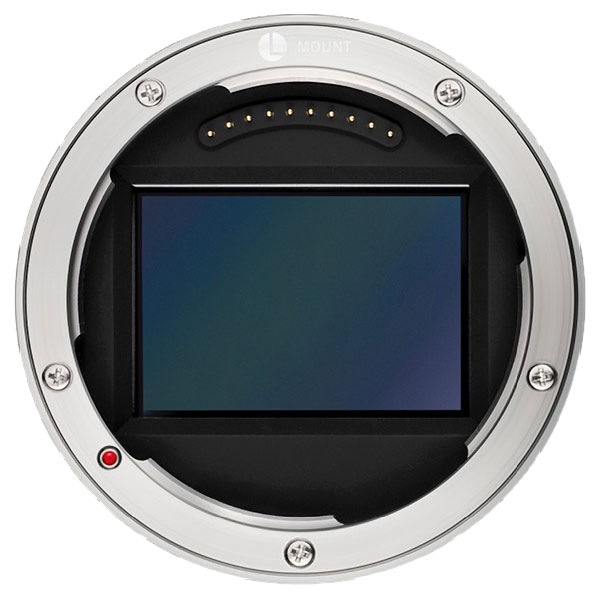
DE: So with the L-mount, do you have more cooperation or more information about the mount, or is it pretty similar?
KY: That's very difficult to answer...
DE: Difficult to answer, yeah. I would imagine at one level, it's just that if you know the electrical interface and the mechanical interface and the protocol, so from that respect maybe not too much different, but... I can't put words in your mouth. I can see you smiling at me., though...
KY: Sorry. But between our three companies, for all of us, there is no, there is no firewall between the companies. All information is cleared, we share all the information.
DE: All the information is shared completely.
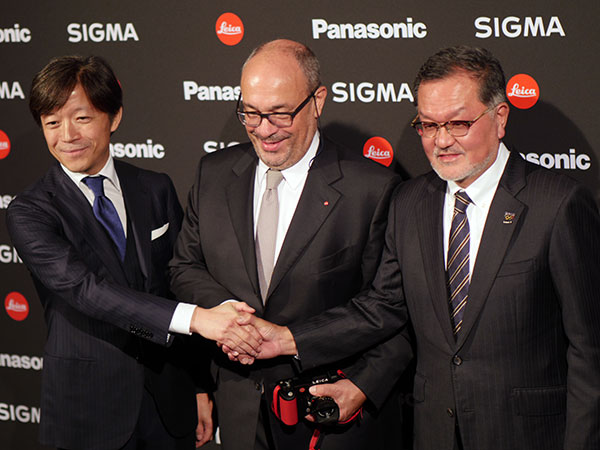
DE: So with the new Canon and Nikon full-frame systems, how do you see those playing out with your product line? Will you be adapting or making lenses for them at some point?
KY: Obviously we have a great interest, but I cannot say anything before a product is released.
DE: Yes, of course.
KY: Once a product is released, we will look at it and we will make a call. But at this moment I really can't say. [Ed. Note: I initially assumed that Yamaki-san was saying he couldn't comment on new Sigma products ahead of time, but it seems he was actually saying that they just need to get their hands on the new bodies from Nikon and Canon, to see what would be involved in reverse-engineering the mount protocols.]
DE: Yeah. I'd imagine there's a lot of effort involved, that means you have to reverse engineer. And they're not giving you... they're doing the opposite of giving you information.
KY: No.
DE: They try to make it difficult.
KY: But if the new system is developed based on the existing EF-mount [technology] in terms of the communication between the camera and the lens, it may not be too difficult.
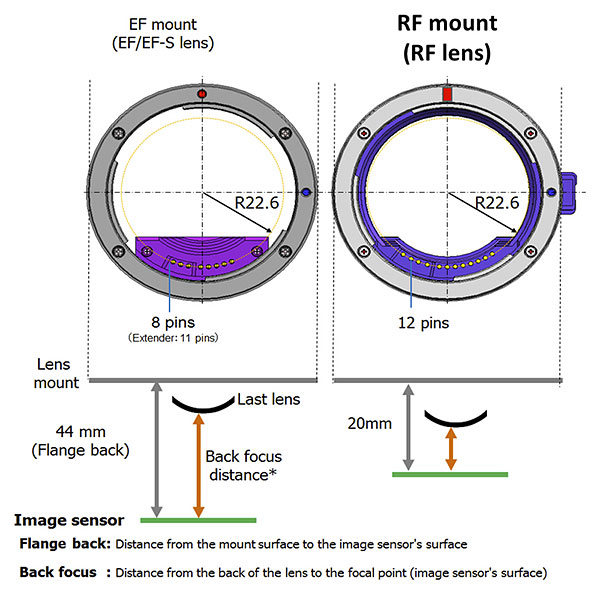
DE: There are the extra contacts, so there's an extra communications channel now.
KY: Yes. Yeah.
DE: And I'm not sure exactly what that might be used for. It was interesting to me that I interviewed the Canon engineers and I asked them what was the purpose of the four contacts. I asked why they need four, because they already have a ground connection, so they could just have one signal line, and use high-speed serial. And they said that not all contacts are used yet, that maybe there is only one.
KY: That's reserved for the future.
DE: Reserved for some kind of future, yeah, that was very interesting. Ah, I see that my time is up, and I have to leave for my next appointment! Apologies that my time has been so short this time, it's always interesting to talk with you!
KY: I appreciate you coming!
DE: Good to see you as always!
As noted earlier, it's always a pleasure to talk with Yamaki-san, and this time was no exception.
I'm hoping to publish a separate articles about the L-mount Alliance (or perhaps a video panel discussion with other members of the IR team?) as to my mind, it's one of the most significant announcements in recent months. In the face of Canon's and Nikon's entry into the full-frame mirrorless arena, the L-mount Alliance promises a fourth, fully-viable alternative in that market space. Sigma, Panasonic and Leica all have separate focuses in their market approach, yet will all be working to a common standard. The L-mount will launch with eight lenses immediately available from Leica as well as three from Panasonic, with more soon on the way from both companies. At the same time, as noted above, Sigma has no less than 14 lenses already in its arsenal that should be able to be converted to L-mount compatibility relatively quickly. For a "brand-new" mount system to have 25 native, high-quality lenses available across a wide range of price points and focal lengths within the first year is remarkable. Panasonic and Leica both bring a lot to the party themselves, but having arguably the world's leading lens designer and manufacturer (that is, Sigma) committed to the platform brings a whole other level of capability.
As Yamaki-san said at the beginning of our conversation, this was probably the most interesting Photokina in the last 20 years, and Sigma was at the very heart of it.
Thanks as always to Yamaki-san for his time, and best wishes to Sigma and the other L-mount partners on this new endeavor. Truly, there's never been a better time to be a photographer than right now!
(Images of Sigma's Kazuto Yamaki, as well as of Yamaki-san with Leica's Andreas Kaufmann and Panasonic's Junichiro Kitagawa, are courtesy of Bautsch and used under a Creative Commons CC0 license via Wikimedia Commons.)